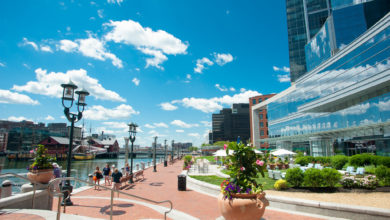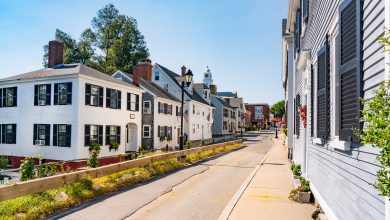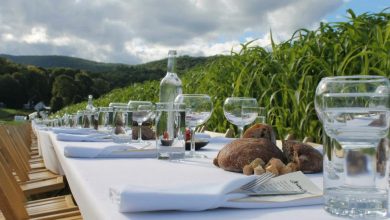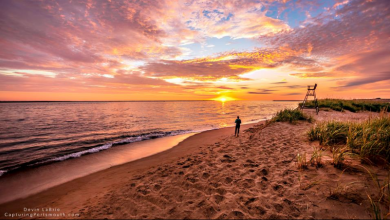Massachusetts’ Momentous Historical Sites
Make a stop at these iconic American Revolution-era locations
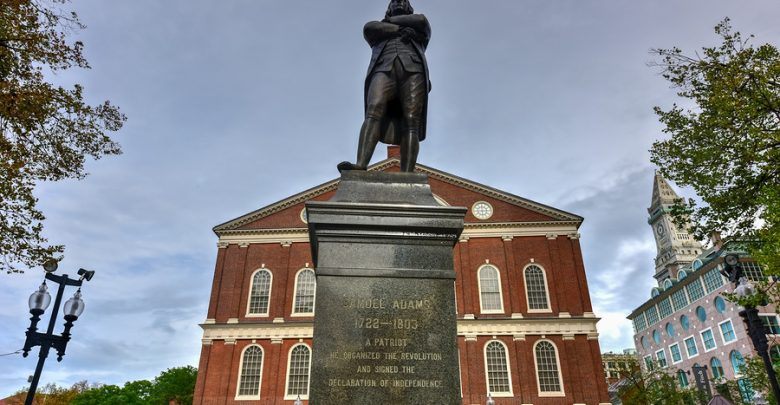
Massachusetts is the birthplace of the American Revolution. Many significant battles and events took place in the state. For many visitors, Boston is the center point to get a full patriotic experience as it is the home of the revolution. Fortunately, you can visit these preserved sites throughout the city and surrounding towns. Here are some historical places that you will want to visit for a trip back to the 18th century.

Old State House
Taxation and occupation led to rising tensions among the citizens of Boston. On March 5, 1770, the city saw a violent clash outside the Customs House. The crowd threw snowballs at the soldiers, and the Redcoats fired shots. After the battle, there were five men dead, including Crispus Attucks. The incident would become known as the Boston Massacre, which was a rallying cry for those who wanted to break away from British occupation.
Today, you can still visit the site of the massacre. At the intersection of Congress and Street Street, there is a marker located outside of the Old State House. On the anniversary of the event, the Bostonian Society hosts reenactments of the massacre.

While you are there, you should visit the Old State House. This structure is the oldest surviving building public building in Boston. Built in 1713, it has served as a center of political, civic, and business life in the city. Guests can visit the museum at their own pace or enjoy a tour by one of the fully-costumed Revolutionary-era tour guides. There are many period rooms filled with artifacts, exhibits, and artwork depicting life during those turbulent times. Inside the King’s Council Chamber, you can sit in the Royal Governor’s chair, who was the most influential person in the colonies.

Old South Meeting House
The spark of the Boston Tea Party began at the Old South Meeting House. This structure is the largest building in colonial Boston, and it was the stage for one of the most dramatic events in the American Revolution. The Old South Meeting House was the center of protests against the British from 1768-75. On December 16, 1773, over 5,000 men entered the building to debate the tea tax. When all compromises failed between the Loyalists and Patriots, Samuel Adams gave a signal that kicked off the Boston Tea Party. The Sons of Liberty would march from the Old South Meeting House to Griffin’s Wharf. From there, the men dumped 342 chests of tea into Boston Harbor.
Today, visitors can tour the Old South Meeting House for a small fee, and you have access to their exclusive audio tours. While you are there, make sure to visit the Voices of Protest exhibit, where you see the tea leaves and a crate from the Boston Tea Party.

Boston Tea Party Ships and Museum
Now that you have seen the birthplace of the Tea Party, you can visit the spot where the colonists dumped it into the harbor. Located on the Congress Street Bridge, this museum is unlike any museum that you have ever experienced. The museum sits on the water and includes a tour of the restored tea ships.

There are also reenactments by actors and several multi-sensory exhibits. Visitors can even help toss some boxes of tea into the harbor. If you are in the mood for a cup of tea, head over to Abigail’s Tea Room, which serves historic blends of tea.

Old North Church
Founded in 1723, the Old North Church is the oldest standing church in Boston. On April 19, 1775, the church gained fame by as a signal tower to the local patriots. Lanterns placed in the belltower gave a signal to riders. These horseback riders were alerted to the British soldiers’ movements to capture the minutemen’s ammunition stockpile in Concord. Paul Revere was one of those riders. Once he made his midnight ride, the church stepped into the history books.
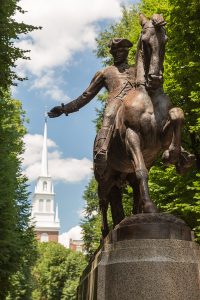
You can explore the church and the grounds on your own, or take one of the behind the scenes tours. These tours take visitors up to the bell ringing chamber, along with a look at historic tombs in the crypts. For something a little sweeter, guests can get a taste of 18th-century chocolate. The Revolutionary-era patriots made some of these delicious recipes. You can grab a box of chocolates in the Clough House near the Old North Church.

Minute Man National Historical Park
Once Paul Revere received the signal from Old North Church, William Dawes and Revere rode towards to Concord and Lexington. They needed to alert the town’s patriots of impending British troops. These patriots were known as “minutemen” as they could be ready at a minute’s notice to take up arms and fight. Visitors can explore the Lexington Common National Historic Site. You can see the Lexington Green, where the militia gathered to confront the British troops. At this site, the first shots of the Revolutionary War were fired, with eight colonists killed and ten more wounded. On the third Monday of April, the state celebrates Patriots Day, and visitors can experience reenactments of the confrontation.

As you head to Concord, you will want to explore the 18th-century homes and taverns along the way. Many of these homes are opened to the public, but they will require an admission fee. The Minute Man National Historical Park is a must-see stop, as it has many exhibits and artifacts about the American Revolution. You can travel down the same path towards the North Bridge as the Concord militia and Minutemen once did to face the British troops on April 19, 1775. The North Bridge also has its own visitors center, which has additional information about the battle, including a video about the skirmish. If you are looking to get an authentic look at the famous battle sites, make sure to walk down the five miles of the Battle Road Trail, which will take visitors from Concord’s Meriam’s Corner to Fiske Hill in Lexington.
These essential locations will give you an in-depth look at America’s War for Independence in the Bay State.

